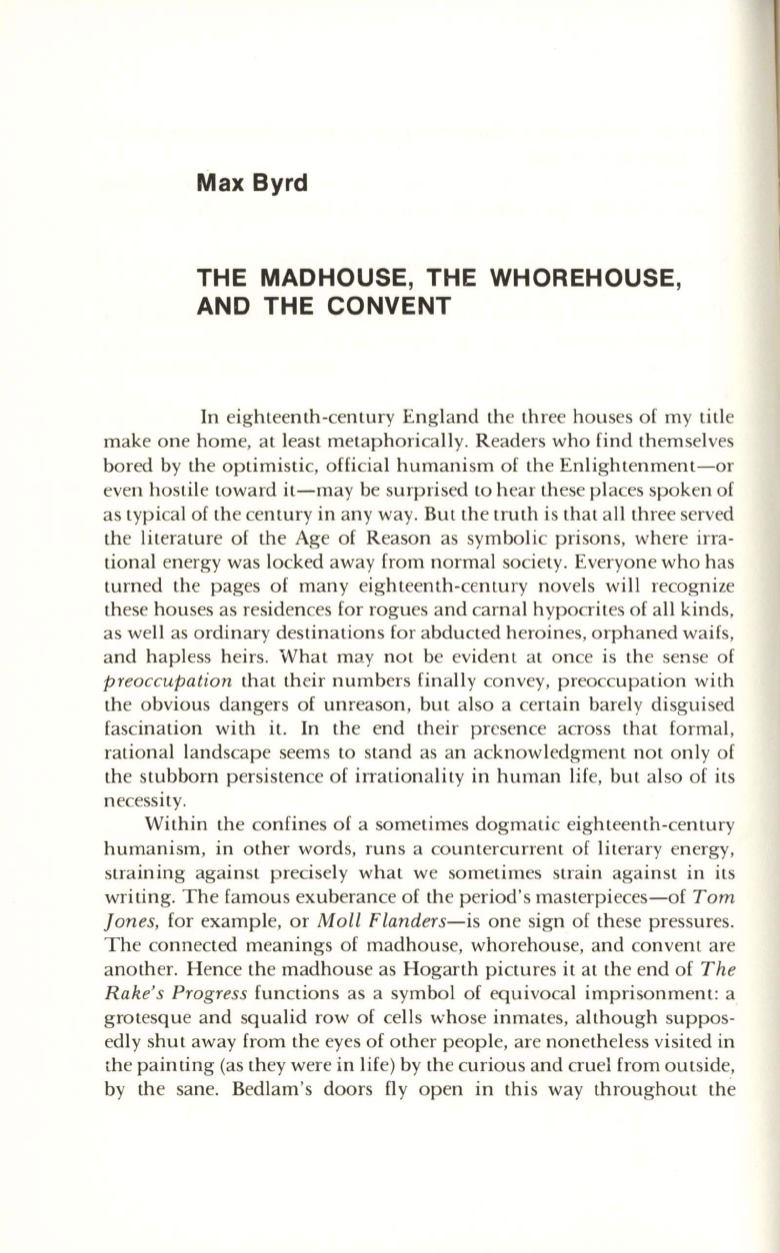
Max Byrd
THE MADHOUSE, THE WHOREHOUSE,
AND THE CONVENT
In eighteenth-century England the three houses of my title
make one home, at least metaphorically. Readers who find themselves
bored by the optimistic, official humanism of the Enlightenment-or
even hostile toward it-may be surprised to hear these places spoken of
as typical of the century in any way. But the truth is that all three served
the literature of the Age of Reason as symbolic prisons, where irra–
tional energy was locked away from normal society. Everyone who has
turned the pages of many eighteenth-century novels will recognize
these houses as residences for rogues and carnal hypocrites of all kinds,
as well as ordinary destinations for abducted heroines, orphaned waifs,
and hapless heirs. What may not be evident at once is the sense of
preoccupation
that their numbers finally convey, preoccupation with
the obvious dangers of unreason, but also a certain barely disguised
fascination with it. In the end their presence across that formal,
rational landscape seems to stand as an acknowledgment not only of
the stubborn persistence of irrationality in human life, but also of its
necessity.
Within the confines of a sometimes dogmatic eighteenth-century
humanism, in other words, runs a countercurrent of literary energy,
straining against precisely what we sometimes strain against in its
writing. The famous exuberance of the period's masterpieces-of
Tom
Jones,
for example, or
Moll Flanders-is
one sign of these pressures.
The connected meanings of madhouse, whorehouse, and convent are
another. Hence the madhouse as Hogarth pictures it at the end of
The
Rake's Progress
functions as a symbol of equivocal imprisonment: a
grotesque and squalid row of cells whose inmates, although suppos–
edly shut away from the eyes of other people, are nonetheless visited in
the painting (as they were in life) by the curious and cruel from outside,
by the sane. Bedlam's doors fly open in this way throughout the


